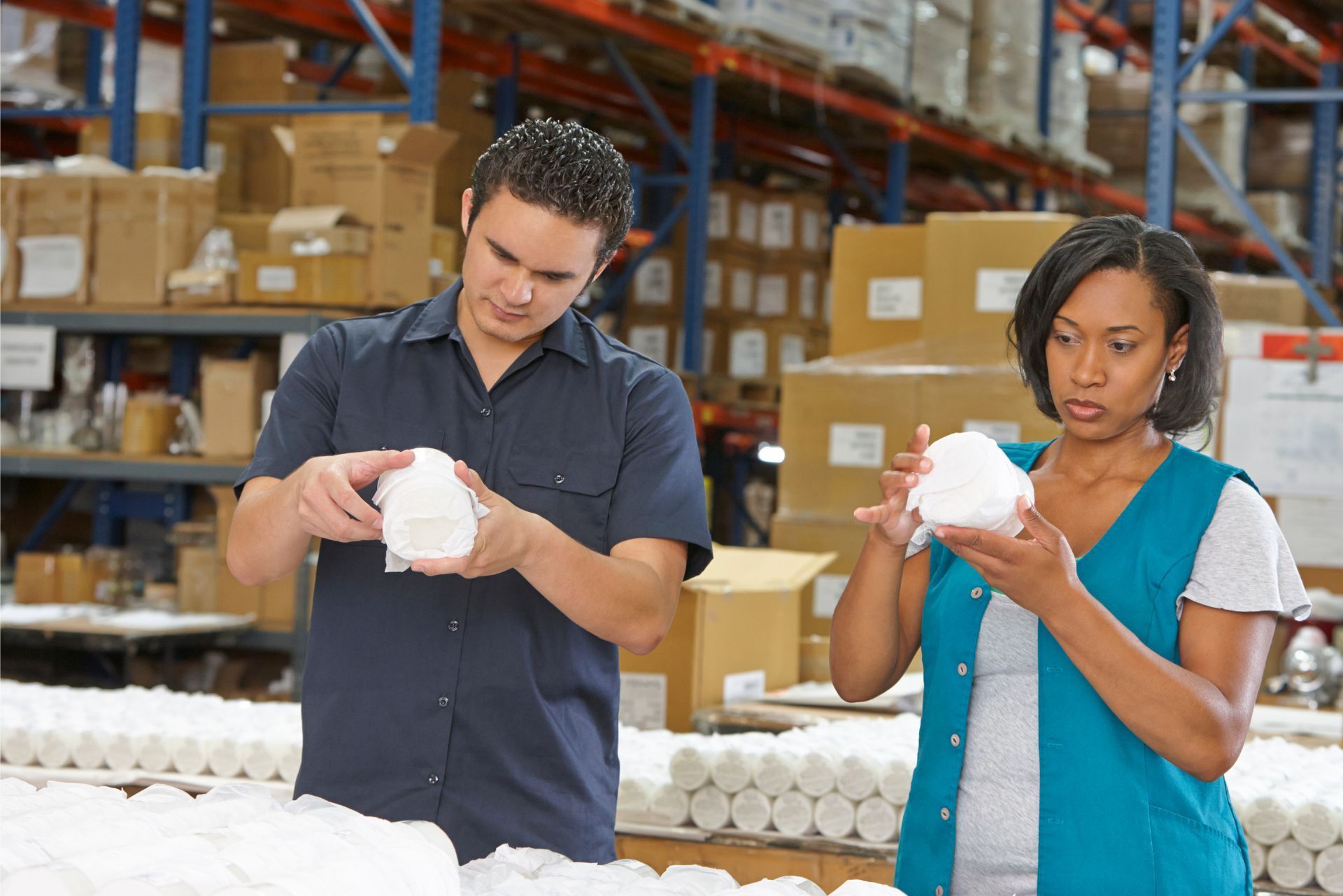Top 3 Recommended Policies

Product liability insurance is a crucial aspect of risk management for businesses involved in the manufacturing, distribution, or sale of products. In Pennsylvania, understanding the nuances of this type of insurance can help protect companies from potential financial losses arising from product-related claims. This article delves into the essentials of product liability insurance in Pennsylvania, including its importance, types of coverage, and key considerations for businesses.
Understanding Product Liability
Product liability refers to the legal responsibility of manufacturers, distributors, and retailers for any injuries or damages caused by their products. In Pennsylvania, the law holds these parties accountable if a product is found to be defective or unreasonably dangerous. This liability can arise from various factors, including design defects, manufacturing defects, and failure to provide adequate warnings or instructions. Understanding the nuances of product liability is crucial for both consumers and businesses, as it not only informs consumers of their rights but also guides manufacturers in ensuring their products meet safety standards.
In recent years, the landscape of product liability has evolved significantly, particularly with the rise of e-commerce and global supply chains. As products are increasingly manufactured overseas and sold online, the complexities of liability claims have expanded. For instance, determining jurisdiction can become challenging when a product is designed in one country, manufactured in another, and sold in yet another. This globalization of commerce necessitates a robust understanding of international laws and regulations surrounding product safety and liability, making it imperative for businesses to stay informed and compliant.
Types of Product Defects
There are three primary types of product defects that can lead to liability claims:
- Design Defects: These occur when a product is inherently unsafe due to its design, even if it is manufactured correctly. For example, a chair that tips over easily due to its design could be considered defective. Design defects can often be identified through rigorous testing and consumer feedback, highlighting the importance of thorough research and development in the product lifecycle.
- Manufacturing Defects: These defects arise during the production process. A batch of toys that contains harmful materials due to a manufacturing error is an example of this type of defect. Such defects can lead to widespread recalls, which not only affect the company financially but can also erode consumer trust if not handled transparently.
- Marketing Defects: Also known as failure to warn, this type involves inadequate instructions or warnings about the product's use. For instance, if a cleaning product does not include a warning about its flammability, it may lead to liability if an injury occurs. Effective marketing practices should ensure that consumers are well-informed about potential hazards and proper usage to mitigate risks.
The Importance of Product Liability Insurance
For businesses in Pennsylvania, product liability insurance is essential for several reasons:
- Financial Protection: This insurance helps cover legal fees, settlements, and medical expenses resulting from product-related claims, safeguarding the company's financial health. Without this coverage, a single lawsuit could potentially bankrupt a small business, making it a critical component of risk management.
- Reputation Management: Being involved in a product liability case can damage a company's reputation. Having insurance can help manage the fallout and maintain customer trust. Companies that respond proactively to safety concerns and demonstrate accountability can often recover more quickly from reputational damage.
- Legal Compliance: Certain industries may require businesses to carry product liability insurance to comply with regulations and standards, ensuring they operate within the law. This compliance is not only a legal obligation but also a best practice that reflects a commitment to consumer safety and ethical business operations.
Moreover, product liability insurance can also provide businesses with access to valuable resources, such as legal counsel and risk management advice. Insurers often have extensive experience in handling claims and can offer guidance on best practices for product safety and compliance, helping businesses to minimize their risk exposure. This proactive approach not only protects consumers but also fosters a culture of safety and responsibility within the industry.

Types of Product Liability Insurance Coverage
Product liability insurance can be categorized into several types of coverage, each designed to address specific risks associated with product-related claims. Understanding these types can help businesses choose the right policy for their needs.
General Liability Insurance
General liability insurance often includes product liability coverage as part of its policy. This type of insurance protects businesses from claims related to bodily injury, property damage, and personal injury caused by their products. It is a foundational coverage that many businesses opt for, as it provides broad protection. Additionally, general liability insurance can cover incidents that occur on a business's premises or as a result of its operations, making it a comprehensive choice for companies looking to safeguard against a variety of risks.
Product Liability Insurance
Product liability insurance specifically focuses on claims arising from the use of a product. This coverage is vital for manufacturers, wholesalers, and retailers, as it addresses the unique risks associated with selling products. It typically covers:
- Legal defense costs
- Settlements and judgments
- Medical expenses for injured parties
Moreover, product liability insurance can extend to cover claims related to design defects, manufacturing defects, and inadequate warnings or instructions. This means that if a product is found to be unsafe due to a flaw in its design or if consumers are not properly informed about its use, the business can be protected against the financial repercussions of such claims. This type of insurance is particularly crucial in industries like food and beverage, pharmaceuticals, and consumer electronics, where the stakes are high and the potential for harm is significant.
Excess Liability Insurance
Excess liability insurance, also known as umbrella insurance, provides additional coverage beyond the limits of a standard liability policy. This type of insurance can be beneficial for businesses that face higher risks or operate in industries with significant liability exposure. It ensures that adequate coverage is available in the event of a catastrophic claim. For instance, if a product causes severe injury leading to a lawsuit that exceeds the limits of the primary policy, excess liability insurance can cover the remaining costs, protecting the business's assets and financial stability.
Furthermore, excess liability insurance can also cover claims that may not be included in the underlying policies, offering an extra layer of protection. This is particularly important for businesses that deal with high-value products or operate in markets where litigation is common. By investing in excess liability coverage, companies can mitigate the risks associated with unexpected legal challenges, allowing them to focus on their core operations without the constant worry of potential liabilities looming over them.
Factors Influencing Product Liability Insurance Costs
The cost of product liability insurance in Pennsylvania can vary significantly based on several factors. Understanding these factors can help businesses budget appropriately and make informed decisions when purchasing coverage.
Type of Business
The nature of a business plays a crucial role in determining insurance costs. For instance, manufacturers of high-risk products, such as pharmaceuticals or heavy machinery, may face higher premiums compared to retailers selling low-risk items like clothing or household goods. Insurers assess the potential risks associated with the products to determine the appropriate coverage costs. Additionally, the industry in which a business operates can also affect rates. For example, businesses in the food and beverage sector may encounter unique challenges related to health and safety regulations, leading to increased scrutiny and potentially higher insurance costs. Understanding these nuances is essential for businesses to navigate their specific risk landscape effectively.
Claims History
A business's claims history can significantly impact insurance premiums. Companies with a history of product liability claims may face higher rates, as insurers view them as higher-risk clients. Conversely, businesses with a clean claims history may benefit from lower premiums, as they are perceived as more responsible and less likely to incur future claims. Moreover, the severity and frequency of past claims also play a role; a single catastrophic claim can have a lasting impact on a company's insurance costs. Therefore, maintaining rigorous quality control measures and proactive risk management strategies is crucial for businesses aiming to keep their insurance premiums manageable.
Coverage Limits
The desired coverage limits also influence the cost of product liability insurance. Higher coverage limits typically result in higher premiums, as they increase the insurer's potential exposure. Businesses should carefully assess their risk levels and choose coverage limits that adequately protect their assets without exceeding their budget. It's also important to consider the specific needs of the business, such as the potential for product recalls or legal defense costs, which can be substantial. Consulting with an insurance professional can provide valuable insights into selecting the right coverage limits tailored to the unique risks faced by the business.
Market Conditions
Market conditions can also play a significant role in influencing product liability insurance costs. The overall economic environment, including factors such as supply and demand for insurance, can lead to fluctuations in premium rates. In times of increased claims across the industry, insurers may raise premiums to offset their losses, impacting all businesses within that sector. Additionally, emerging trends, such as the rise of e-commerce and the associated risks of online sales, can lead to new underwriting criteria and pricing models that businesses must adapt to. Staying informed about market trends and potential shifts can help businesses anticipate changes in their insurance costs.
Regulatory Environment
The regulatory environment in Pennsylvania can also affect product liability insurance costs. Changes in laws and regulations regarding product safety, consumer protection, and liability standards can create additional risks for businesses. For example, stricter regulations may require companies to invest more in compliance and safety measures, which can, in turn, influence their insurance premiums. Businesses should remain vigilant about regulatory developments and consider how these changes may impact their liability exposure and insurance needs. Engaging with industry associations or legal experts can provide valuable guidance in navigating this complex landscape.
How to Obtain Product Liability Insurance in Pennsylvania
Acquiring product liability insurance involves several steps, each designed to ensure that businesses find the right coverage for their needs. Following a structured approach can simplify the process and lead to better outcomes.
Assess Your Risks
Before seeking insurance, businesses should conduct a thorough assessment of their risks. This includes evaluating the products they sell, identifying potential hazards, and understanding the legal landscape surrounding product liability in Pennsylvania. A comprehensive risk assessment can help businesses determine the level of coverage they require.
Research Insurance Providers
Once the risks are assessed, businesses should research various insurance providers that offer product liability coverage. It is essential to compare policies, coverage limits, and premiums from multiple insurers to find the best fit. Reading reviews and seeking recommendations from industry peers can also provide valuable insights into the reliability and reputation of different providers.
Consult an Insurance Agent
Engaging with an experienced insurance agent can streamline the process of obtaining product liability insurance. Agents can offer personalized advice based on the specific needs of a business, help navigate complex policy language, and negotiate terms with insurers. Their expertise can be invaluable in securing the most appropriate coverage.

Common Exclusions in Product Liability Insurance
While product liability insurance provides essential protection, it is crucial for businesses to understand the common exclusions that may apply to their policies. Being aware of these exclusions can help prevent surprises during a claim process.
Intentional Acts
Insurance policies typically do not cover claims arising from intentional acts or misconduct. If a business knowingly sells a defective product or engages in fraudulent practices, the insurer is unlikely to provide coverage for resulting claims. This exclusion emphasizes the importance of ethical business practices.
Contractual Liability
Product liability insurance may not cover liabilities assumed under contracts. If a business agrees to indemnify another party for product-related claims, the insurer may deny coverage for those claims. It is essential for businesses to review contracts carefully and understand their implications on liability coverage.
Employee Injuries
Claims related to employee injuries caused by products are generally excluded from product liability insurance. Businesses must have separate
workers' compensation insurance to cover employee injuries sustained on the job. Understanding this distinction is vital for ensuring comprehensive coverage.
Filing a Product Liability Claim
In the unfortunate event of a product liability incident, knowing how to file a claim is crucial for businesses. The process typically involves several key steps to ensure that claims are handled efficiently and effectively.
Document the Incident
Thorough documentation is essential when filing a product liability claim. Businesses should gather all relevant information, including photographs of the product, details of the incident, witness statements, and any medical records related to injuries. This documentation will support the claim and help establish the facts surrounding the incident.
Notify the Insurance Provider
Once the incident is documented, the next step is to notify the insurance provider. This should be done as soon as possible to ensure compliance with policy requirements. Most insurers have specific timeframes for reporting claims, and failing to adhere to these timelines may jeopardize coverage.
Cooperate with the Investigation
After a claim is filed, the insurance company will conduct an investigation to assess the validity of the claim. Businesses should cooperate fully with the insurer during this process, providing any requested information or documentation. Open communication can facilitate a smoother claims process and lead to a quicker resolution.
Preventing Product Liability Claims
While insurance provides financial protection, businesses should also take proactive steps to prevent product liability claims from arising in the first place. Implementing effective risk management strategies can minimize exposure and enhance overall safety.
Quality Control Measures
Establishing robust quality control measures is essential for preventing defects in products. Businesses should implement rigorous testing protocols, conduct regular inspections, and adhere to industry standards to ensure that products meet safety requirements. A commitment to quality can significantly reduce the likelihood of product-related claims.
Employee Training
Training employees on product safety and proper handling procedures is crucial for minimizing risks. Employees should be educated about potential hazards, safe manufacturing practices, and the importance of adhering to safety standards. A well-trained workforce can help identify and address issues before they lead to liability claims.
Clear Product Warnings and Instructions
Providing clear and comprehensive warnings and instructions with products is vital for reducing liability risks. Businesses should ensure that all products include appropriate safety warnings and usage instructions to inform consumers of potential risks. This proactive approach can mitigate claims related to marketing defects and enhance consumer safety.
Conclusion
Product liability insurance is a critical component of risk management for businesses operating in Pennsylvania. Understanding the intricacies of this insurance, including the types of coverage available, factors influencing costs, and common exclusions, empowers businesses to make informed decisions. By taking proactive measures to prevent product liability claims and securing appropriate coverage, businesses can protect their financial interests and maintain their reputation in the marketplace.
In a landscape where consumer safety is paramount, having the right product liability insurance is not just a legal requirement but a commitment to quality and responsibility. As businesses navigate the complexities of product liability, staying informed and prepared can make all the difference in safeguarding their future.
Contact Us

